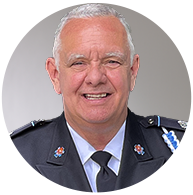Cerebral Palsy Therapies
If your child has cerebral palsy, there are several types of therapy they can undergo to help alleviate symptoms and provide them with a better quality of life. These therapies are often used in conjunction with other forms of treatment, such as alternative medicine and surgery. Read on to learn about the various types of cerebral palsy therapy and the benefits they may provide for your child.
Physical Therapy
Used to rehabilitate muscles and the musculoskeletal system, physical therapy is known as the cornerstone for cerebral palsy treatment. Physical therapy typically begins in the first few years of life, or soon after the diagnosis is made. This specific form of therapy uses a variety of equipment and exercises to improve patient mobility.
There is no standard cerebral palsy therapy that works for every case. Physical therapy programs use specific sets of exercises that are individually catered to each patient’s needs. There are two main goals associated with this type of therapy. The first includes preventing disuse atrophy, which involves the weakening or deterioration of muscles that are not being used. The other main goal is to prevent contracture, which happens when the muscles become fixed in a rigid, abnormal position. Early detection and management of muscular problems are crucial in early childhood development.
Speech Therapy
Speech therapy is defined as the treatment of communication disorders. Those who work in the field of communication disorders are known as speech therapists and speech-language pathologists. Cerebral palsy therapy sessions may consist of a series of exercises and drills designed to strengthen the muscles involved in speech and swallowing. They also aim to consistently improve oral motor skills. In addition, speech therapy may include sign language and the use of picture symbols or augmented and alternative communication devices.
Occupational Therapy
Occupational therapy and rehabilitation deals primarily with muscles responsible for wrist, hand, and finger movements, facial expressions, tongue movement, and swallowing reflexes. Occupational therapists are trained to help patients acquire or improve daily living skills needed for self-care, work, and play. This type of cerebral palsy therapy uses a regimen of exercises, adaptive equipment, and training to help a child realize their goals and independence.
Psychotherapy
Also referred to as “talk therapy,” psychotherapy may improve behavioral issues, provide encouragement, increase self-esteem, reinforce positive messages, and stop negative behaviors. During this cerebral palsy therapy, therapists sit down with you and your child to explain the situation and offer potential coping skills.
Constraint-Induced Movement Therapy (CIMT)
CIMT aims to improve a child’s movement on one side of their body due to a brain injury that resulted in an impaired limb. During this type of CP therapy, a cast or splint physically constrains the unimpaired or less impaired hand or wrist, while intensive training is performed on the impaired limb. This encourages patients to use their affected limb rather than relying on the unimpaired limb.
According to some research, pediatric CIMT administered at moderate and high doses provided patients with several benefits. CIMT typically consists of lessons spanning one to two weeks in a fun environment that motivates children to use the affected side of their body.
Water Therapy
Also known as aquatic therapy, water therapy may come with several physical and mental benefits for patients and their families. Using guided supervision and water’s detoxifying properties, this type of cerebral palsy therapy aims to promote a child’s physical functions. Some of its benefits may include less tension and stress, an increase in cardiovascular fitness, and less discomfort after a therapy session.
Essentially, the water’s buoyancy allows them to move more freely and provides them with the opportunity to perform both anaerobic and aerobic exercises safely and effectively. Some types of water therapy include aquatic yoga, swimming, breath control exercises, and social water games.
Nutritional Evaluations
Since cerebral palsy results in muscle impairment, it has the potential to affect a child’s facial muscles. Because of this, it may create feeding difficulties due to a child’s inability to chew, suck, or swallow. Nutritional evaluations may help avoid undernourishment, growth delay, and malnutrition.
With nutrition therapy, nutritionists and dietitians create a dietary plan that suits the needs of an individual patient based on their health conditions and environment. Qualified practitioners and primary care physicians may provide you with guidance on adjusting your child’s diet or intake. Common concerns with nutritional evaluations include how to prepare food, how to feed, what to feed, and when to feed.
Behavioral Modification
Behavioral modification aims to promote good behavior rather than poor behavior. If something triggers a child’s frustration, for example, a behavioral therapist may suggest different activities they can do to alleviate their anger. When negative coping mechanisms are addressed sooner rather than later, it can greatly affect a child’s everyday life.
Despite the many types of therapy for cerebral palsy, having a child or loved one suffer from CP can have a substantial emotional and financial impact on your family. If you believe that your child’s cerebral palsy is the result of medical malpractice, you may have a case and could be eligible for compensation. Janet, Janet & Suggs, LLC is home to the Cerebral Palsy Family Lawyers, who have helped families across the country with their CP and medical negligence cases. Contact us today so we can help you examine your options.

William R. “Topper” Cramer, RN, MBA, MS, CCRN, CFRN, EMT-P
Legal Nurse Consultant | Nurse Paralegal
Topper has been involved in emergency, transport, and critical care medicine since 1978 when he became an EMT in high school. A United States Air Force veteran, he remains active as a pre-hospital RN/paramedic, certified flight nurse, and critical care nurse. In addition to his professional role as a nurse consultant/nurse paralegal, he is the Chief of Operations at Walkersville Volunteer Rescue in Frederick County, Maryland. READ FULL BIO
